Check Out These Incredible Photos of Asian Rice Terraces
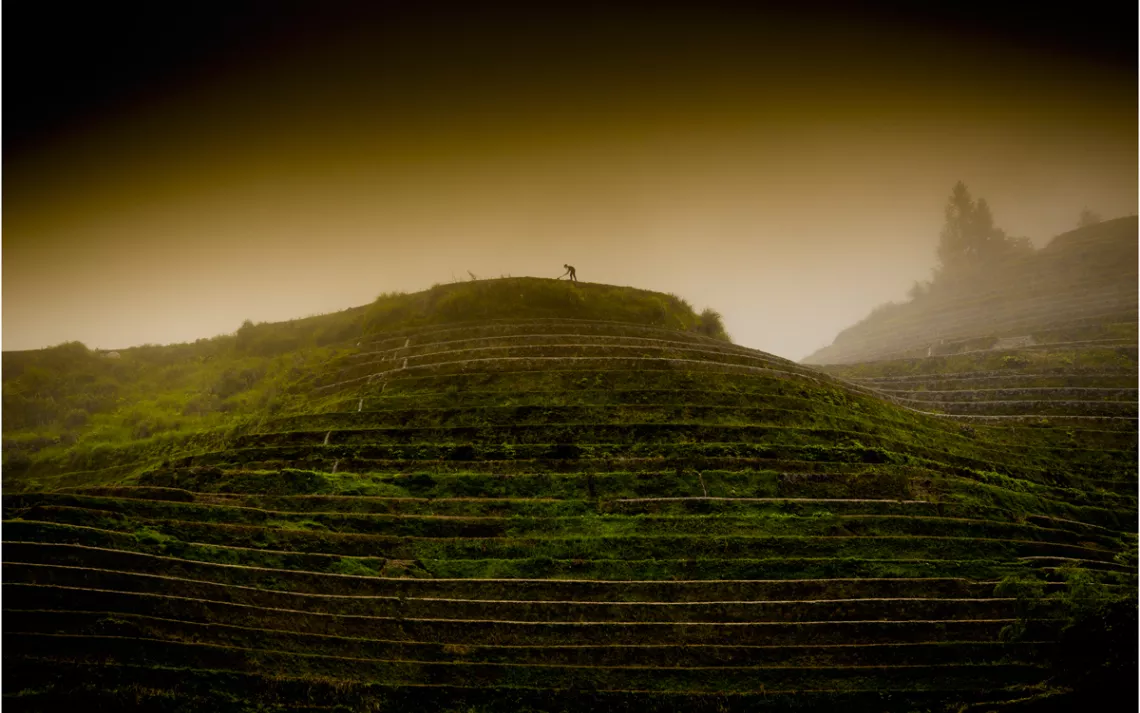
A Yao tribesman works late into the afternoon on rice terraces that scale mountains outside the village of Tantou, China. The rice terraces of China's Guangxi Province were built by hand over centuries—a prime example of how humans have reshaped the planet to meet our basic needs. The terraces must be dredged and readied for planting twice a year.
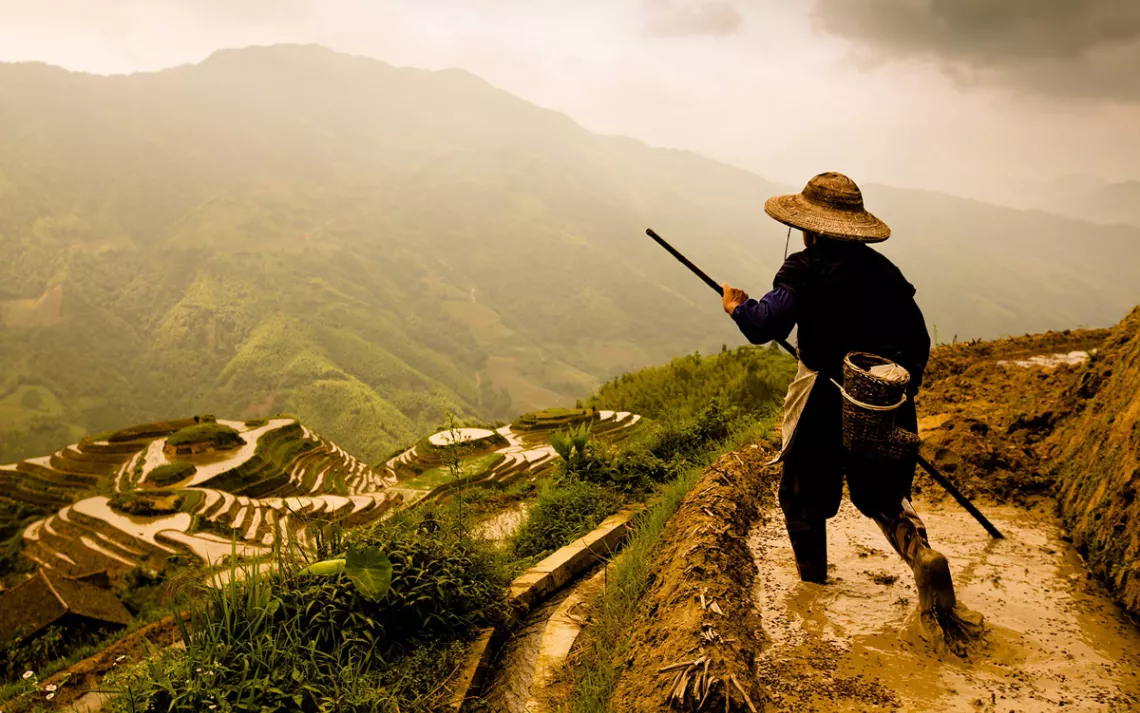
A member of the Yao (an ethnic minority tribe) in southern Guangxi province, China, uses a hoe to ready his family's rice terraces for planting. Most highland communities are not able to produce enough rice themselves and must buy supplemental rice.
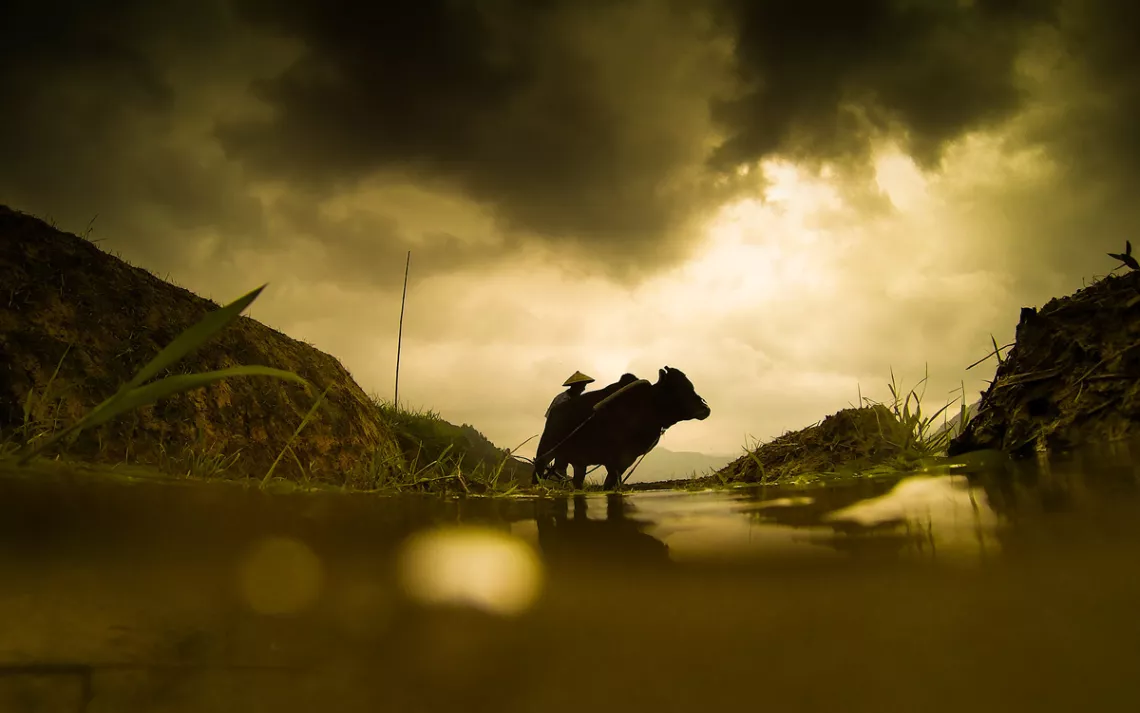
A Yao tribesman leads a water buffalo through a highland rice terrace near Guilin, China.
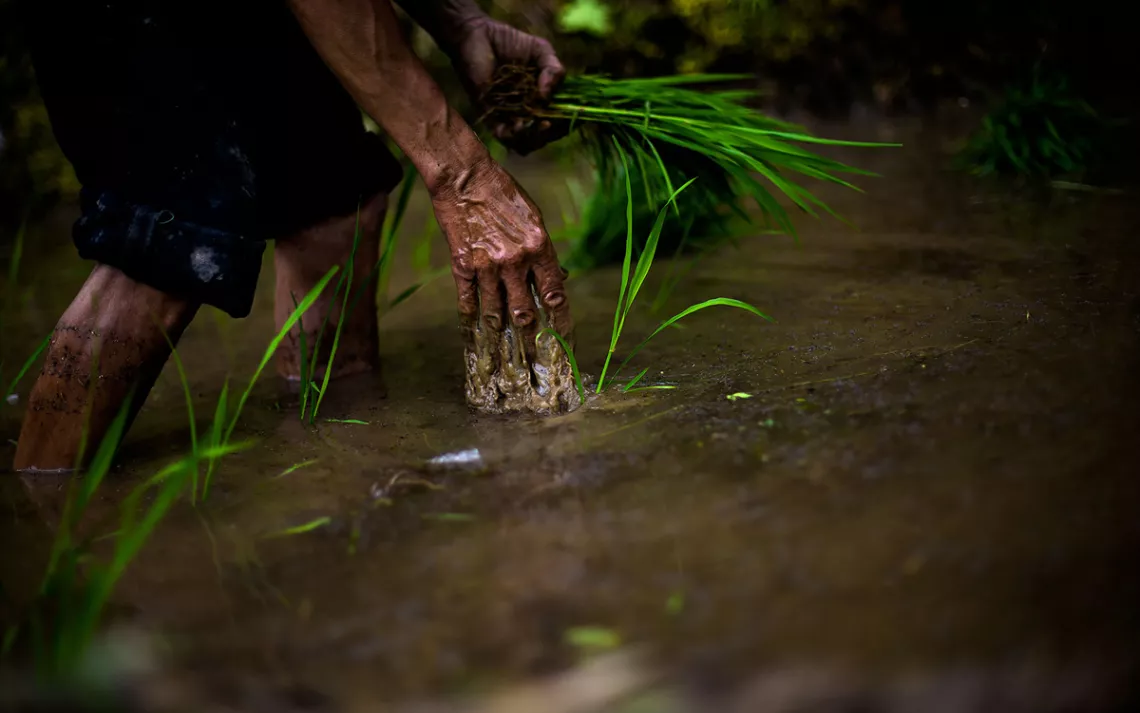
Near Hualien, Taiwan, rice seedlings are planted by hand in smaller or poorer plots. More-modern rice planting is done by machine.
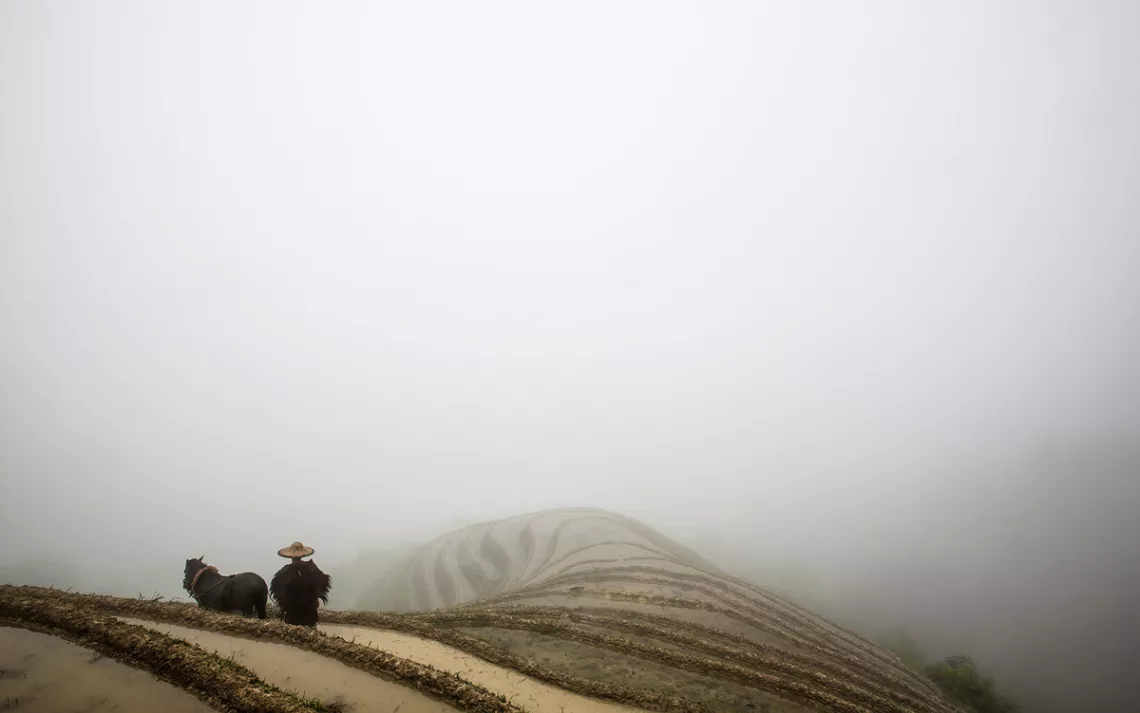
A Yao tribesman and his horse look over cloud-filled rice terraces near Tantou village in Guangxi, China. Horses and water buffalo are used to dredge terraces, as machinery is difficult and expensive to use in the narrow, exposed terraces.
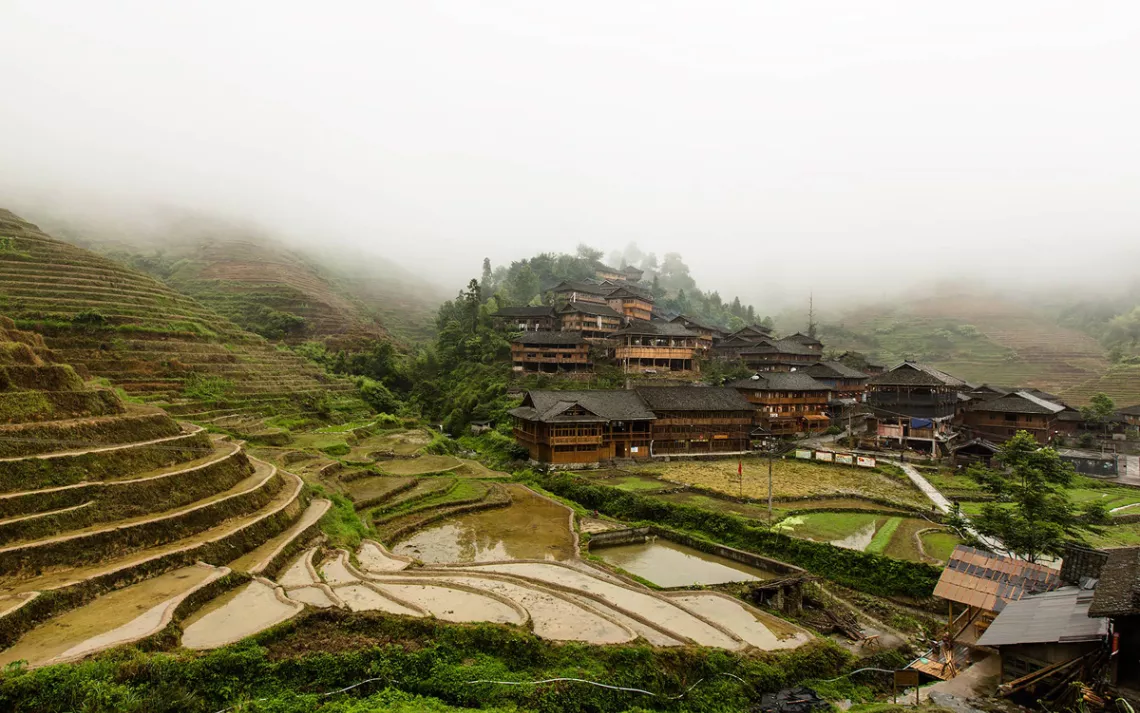
The highland community of Tantou near Guilin, China. This village had only narrow footpaths that connected it to other villages and supported several large families that worked the terraces in the surrounding mountains.
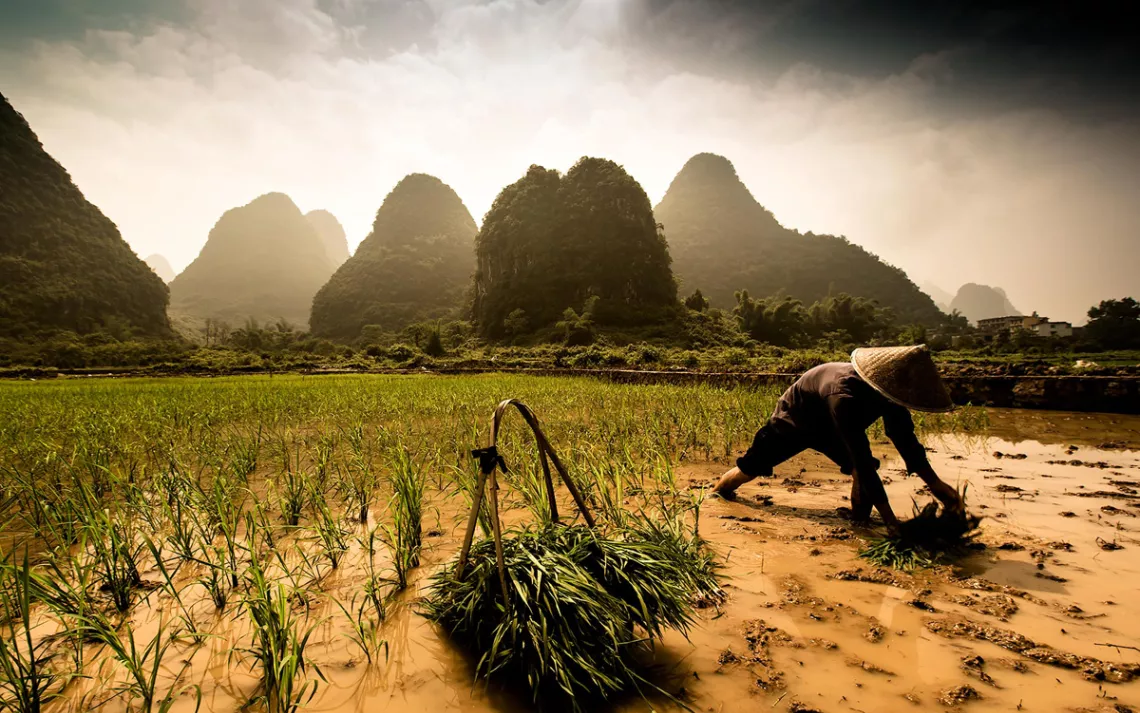
Outside Guilin, China, a farmer hand-plants rice seedlings in a valley among the Karst Mountains. Each seedling is grown from seed until it is ready to be transported to the fields and planted.
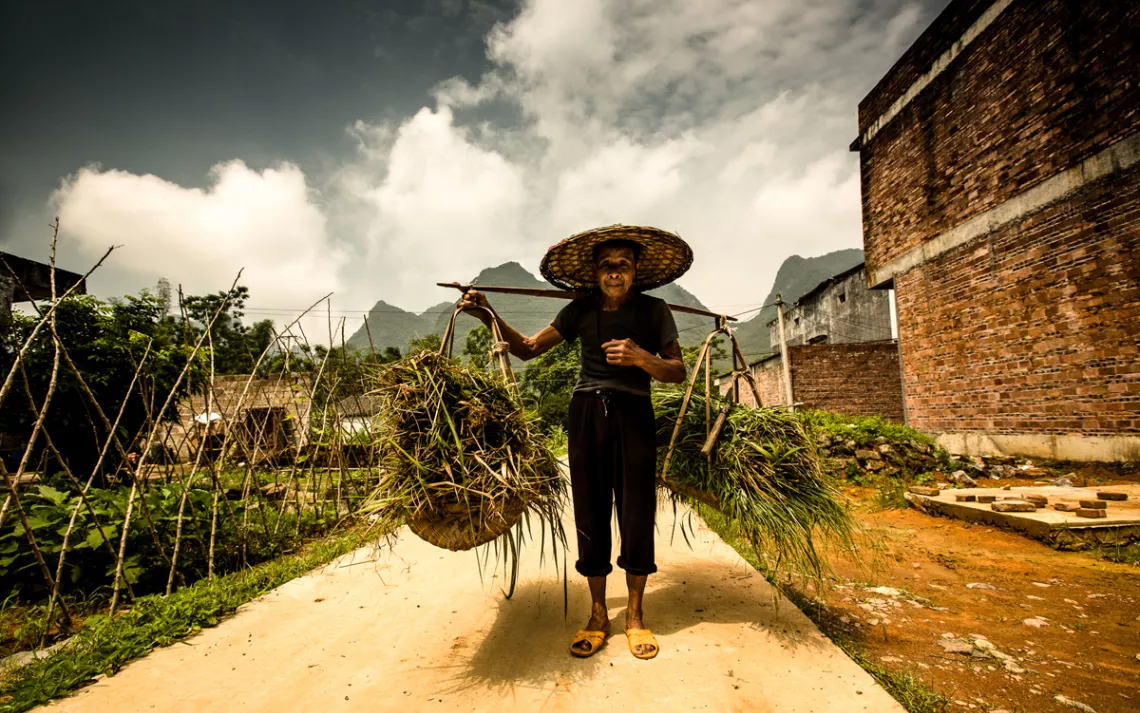
A villager from Daoxian, China, carries a double basket of rice seedlings to the fields to be planted by hand.
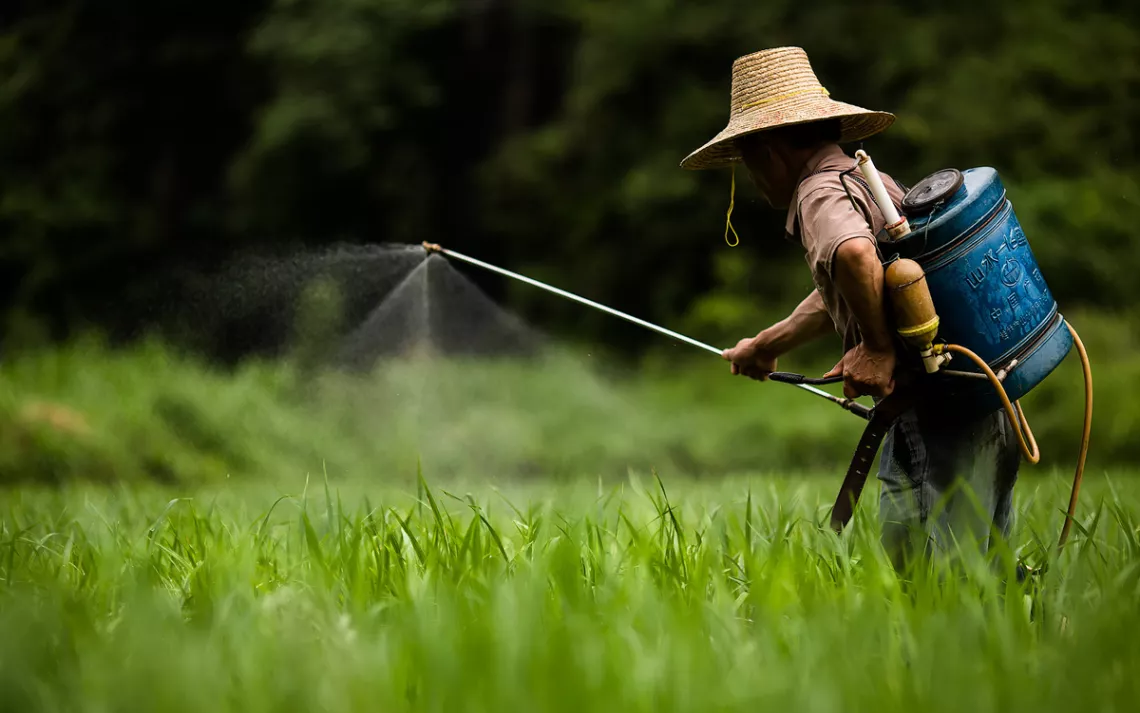
Outside the city of Dong Ha, Vietnam, a farmer sprays pesticides on a rice field. The lowland and larger rice fields would utilize pesticides, while the highland terraces would use ducks to control pests.
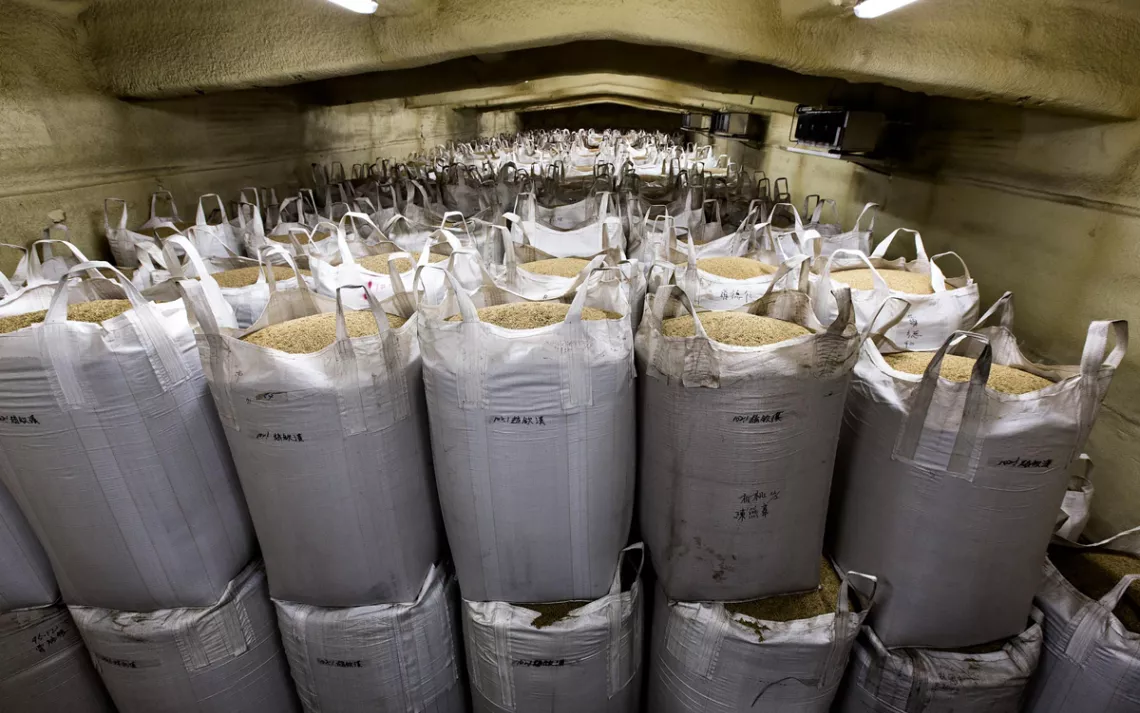
In a rice-processing plant near Hualien, Taiwan, full bags of husked rice sit ready to be packaged and distributed. These processing plants would act as a storage depot, a processing center, and a distribution point for area farmers.
- Keywords:
 The Magazine of The Sierra Club
The Magazine of The Sierra Club


